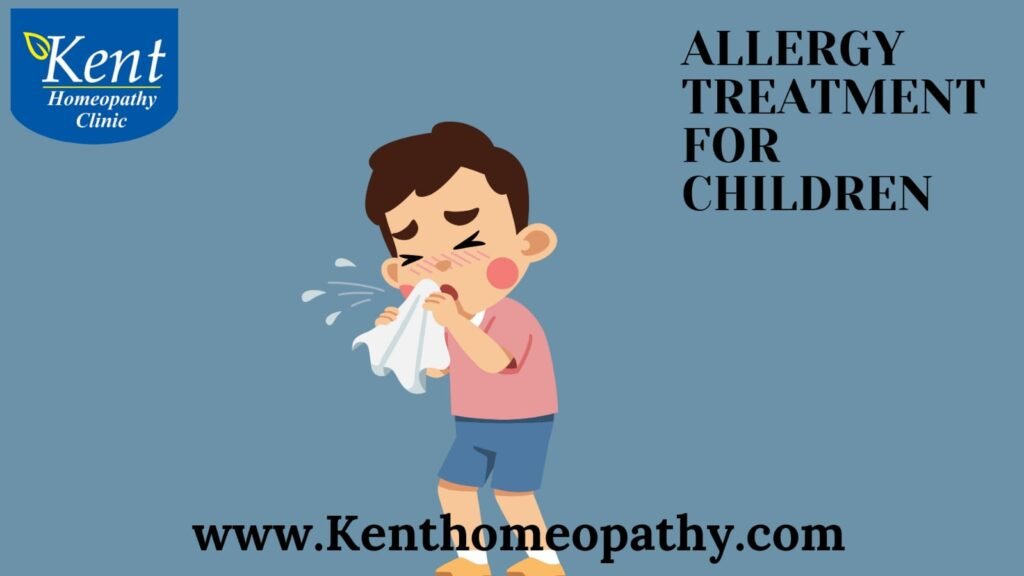Allergy Treatment for Children

Allergy Treatment for Children: Navigating Causes, Symptoms, and Types
Allergies in children can present unique challenges, but with proper understanding, early identification, and appropriate treatment, their impact can be minimized. Allergies occur when a child’s immune system reacts abnormally to substances that are usually harmless. Here, we delve into the causes, symptoms, and types of allergies in children, along with effective treatment strategies.
Causes:
- Genetic Factors: Children with a family history of allergies are more predisposed to developing allergic conditions. Genetic factors contribute to the way their immune systems respond to allergens.
- Environmental Exposures: Early and repeated exposure to allergens in the environment plays a role in the development of allergies. Common environmental triggers include pollen, dust mites, pet dander, mold spores, and certain foods.
- Dietary Factors: Certain foods can trigger allergies in children. Common allergenic foods include cow’s milk, eggs, peanuts, tree nuts, soy, wheat, and fish.
- Hygiene Hypothesis: Lack of exposure to infections and microbes in early childhood may increase the risk of developing allergies. The hygiene hypothesis suggests that a limited exposure to germs may result in an overly sensitive immune system.
Symptoms:
- Respiratory Symptoms:
– Sneezing and Runny Nose: Children with respiratory allergies often exhibit frequent sneezing and a runny or stuffy nose.
– Coughing and Wheezing Allergies can trigger or worsen asthma symptoms, leading to persistent coughing and wheezing.
- Skin Symptoms:
– Eczema: Allergic reactions in children can manifest as eczema, characterized by red, itchy patches on the skin.
– Hives: Raised, red welts on the skin may appear as an immediate reaction to allergens.
- Gastrointestinal Symptoms:
– Nausea and Vomiting: Food allergies can lead to gastrointestinal symptoms, including nausea and vomiting.
– Abdominal Pain and Diarrhea: Digestive allergies can cause discomfort and diarrhea.
- Food Allergy Symptoms:
– Swelling: Allergic reactions to foods may lead to swelling, especially around the face and lips.
– *Difficulty Breathing:* Severe food allergies can cause respiratory distress.
- Anaphylaxis:
– A severe, rapid-onset allergic reaction that can be life-threatening. Symptoms include difficulty breathing, a sudden drop in blood pressure, and swelling of the face and throat.
Types of Allergies in Children:
- Respiratory Allergies:
– Seasonal Allergic Rhinitis (Hay Fever): Triggered by airborne allergens like pollen, leading to symptoms such as sneezing, runny nose, and itchy eyes.
– Asthma: Allergic asthma is common in children, where allergens like pollen, mold, or pet dander can trigger asthma symptoms.
- Food Allergies:
– Common Allergens: Children may develop allergies to common foods like milk, eggs, peanuts, tree nuts, soy, wheat, and fish.
– Immediate Reactions: Reactions can range from mild to severe, with symptoms appearing shortly after ingesting the allergenic food.
- Skin Allergies:
– Atopic Dermatitis: Often associated with allergic conditions, atopic dermatitis, or eczema, can cause itchy and inflamed skin.
- Insect Sting Allergies:
– Reactions to stings from bees, wasps, or fire ants can range from mild swelling to severe, systemic reactions.
- Contact Dermatitis:
– Allergic reactions to substances like certain metals, plants (e.g., poison ivy), or cosmetics can cause skin irritation.
In conclusion, addressing allergies in children requires a comprehensive approach, involving identification of causes, management of symptoms, and implementation of preventive measures. Early intervention and collaboration with healthcare professionals can significantly improve the quality of life for children dealing with allergies.
Contact to know more
Contact
Timings
Monday to Saturday:
11:00 AM to 02:30 PM
06:30 PM to 09:00 PM
